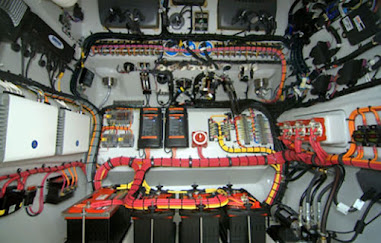Navigating the Waves: A Guide to Marine Wires
Embarking on a marine adventure is an exhilarating experience, but ensuring the safety and reliability of your boat's electrical system is essential for smooth sailing. At the core of this system lies marine wires, the vital conduits that power everything from navigation equipment to lighting. In this comprehensive guide, we'll dive deep into the world of marine wires, providing you with the knowledge and expertise needed to navigate the seas with confidence.
Understanding Guide to Marine Wires Basics:
Marine wires are specifically designed to withstand the harsh conditions of the marine environment, including exposure to saltwater, humidity, and extreme temperatures. Constructed using marine-grade materials such as tinned copper, these wires offer superior corrosion resistance and durability compared to standard electrical wires. Understanding the basics of marine wires is essential for ensuring the safety and reliability of your boat's electrical system.
Types of Marine Wires:
There are several types of marine wires to consider when outfitting your boat's electrical system. Direct Current (DC) wires are commonly used for low-voltage applications such as lighting and electronics while Alternating Current (AC) wires are used for higher voltage systems like onboard generators and shore power connections. Tinned wires, featuring a protective coating of tin over copper, are preferred for marine applications due to their enhanced corrosion resistance and longevity.
Choosing the Right Marine Wire:
Selecting the right marine wire involves considering factors such as wire gauge, insulation type, and voltage rating. Wire gauge should be chosen based on the maximum current flow and length of the wire run to prevent voltage drop and ensure optimal electrical performance. Marine-grade insulation materials such as cross-linked polyethylene (XLPE) or polyvinyl chloride (PVC) are essential for protecting wires from moisture, abrasion, and UV exposure in the marine environment.
Installation Best Practices:
Proper installation of marine wires is critical for preventing electrical failures and ensuring the safety of your boat and its occupants. Wires should be routed to minimize the risk of chafing and abrasion, and secured using appropriate clamps and supports to prevent movement and strain on connections. When making electrical connections, it's essential to use proper techniques such as crimping or soldering and to waterproof connections using heat shrink tubing and marine-grade sealants.
Maintenance and Inspection:
Regular maintenance and inspection of your boat's electrical system are essential for detecting and addressing any issues before they escalate. Inspect wires and connections for signs of wear, corrosion, or damage, and conduct routine testing using a multimeter to ensure proper voltage levels and continuity. Cleaning and protecting marine wires with corrosion inhibitors and dielectric grease can help prolong their lifespan and maintain optimal electrical performance.
Understanding Of Marine Wires:
Navigating the seas with confidence requires a solid understanding Guide to Marine Wires and their role in your boat's electrical system. By following the guidelines outlined in this comprehensive guide, you can ensure the safety, reliability, and performance of your boat's electrical system, allowing you to enjoy your marine adventures to the fullest. So hoist the sails, set your course, and embark on your journey knowing that your boat is equipped with the finest marine wires to keep you safe and secure on the water.

Comments
Post a Comment